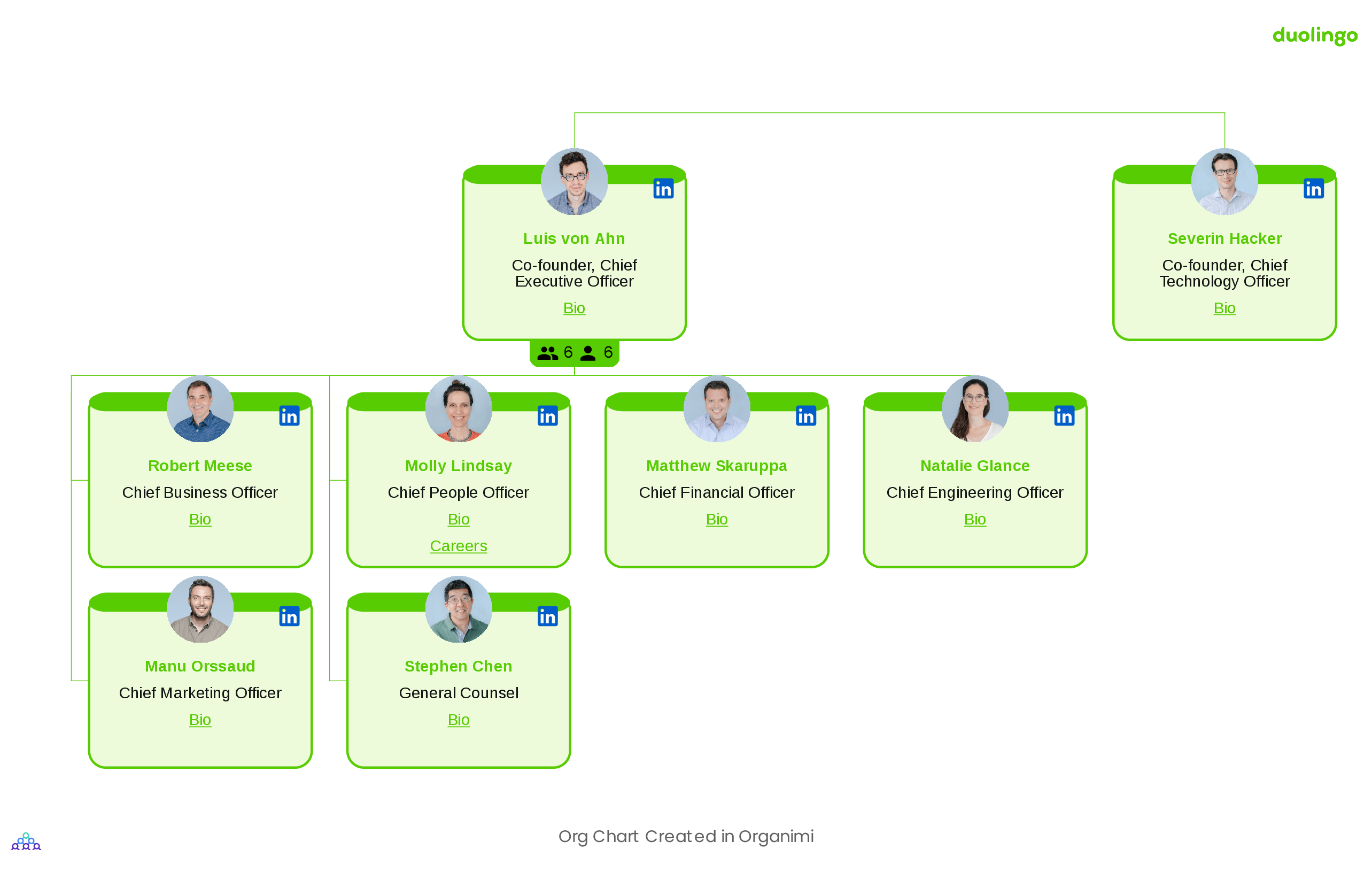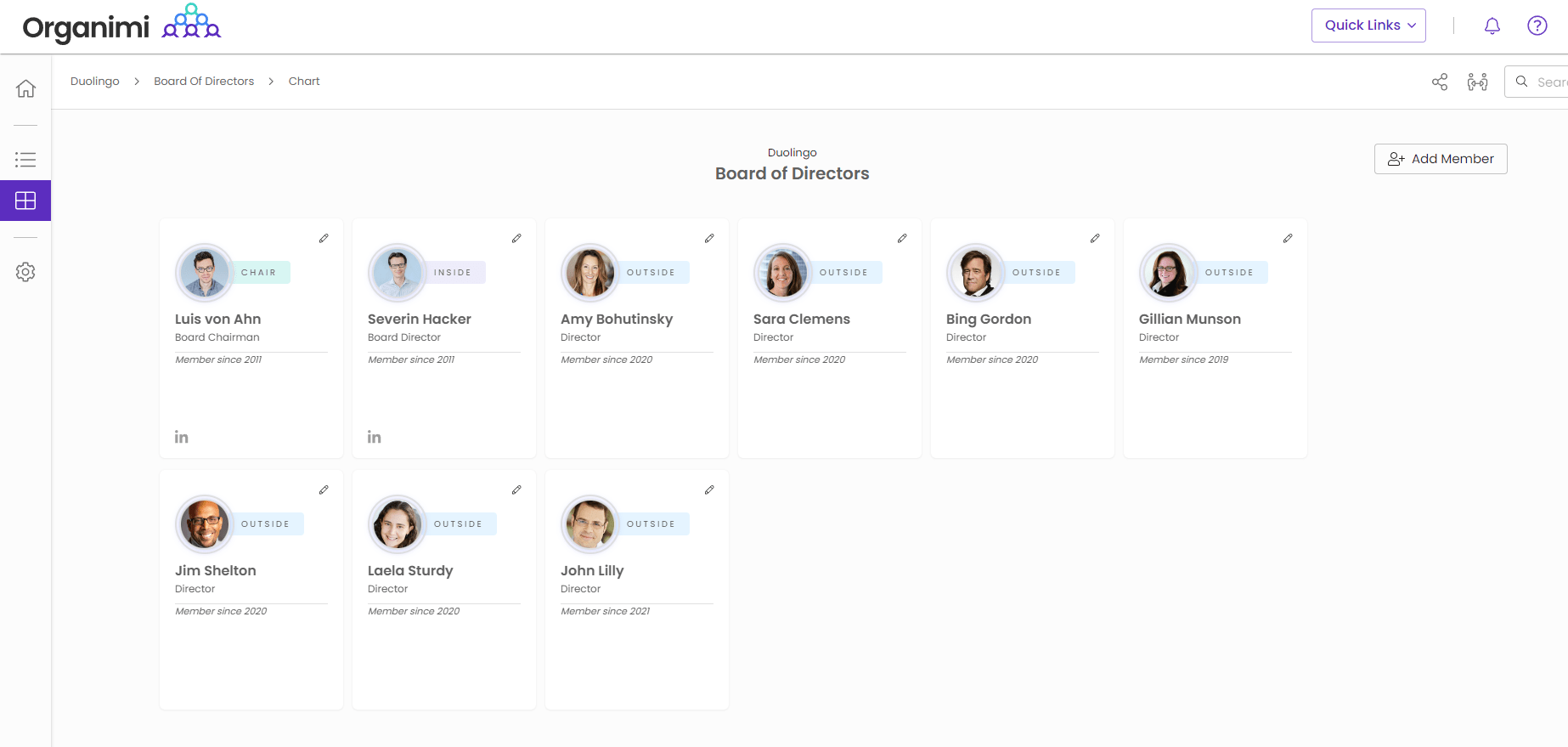Duolingo’s Organizational Structure
Create this exact chart in Organimi! Scroll below to see how.
Introduction
Duolingo is a language-learning platform founded in 2009 by Carnegie Mellon University professor Luis von Ahn and his student Severin Hacker. Officially launched in 2012, Duolingo has grown rapidly and is known for its gamified approach to language learning. The platform adapts to each user’s learning style, offering personalized feedback and recommendations. It also features podcasts for intermediate learners, with stories typically narrated by native speakers.
As of 2021, Duolingo is a public company trading on NASDAQ under the ticker DUOL. The company, which is headquartered in Pittsburgh, Pennsylvania, has expanded its reach significantly in recent years, with offices in Seattle, New York, and Beijing, reflecting its growing influence in the edtech sector. Duolingo’s innovative approach, including the use of AI to streamline user learning paths, has made it a leading name in online education.
Duolingo’s Executive Management
Duolingo’s day-to-day operations are managed by the company’s Executive Management team, which is led by the CEO & Board Chairman. This individual is supported by a number of C-level colleagues responsible for leading different areas of the company, including People and Marketing.

Duolingo’s Board of Directors plays a critical role in the overall governance and strategic direction of the company. Their responsibilities involve overseeing the company’s strategic direction, ensuring corporate governance, making significant business decisions, and being involved in financial oversight and risk management.
The board’s composition includes a mix of executive and independent directors, with various committees such as Audit, Risk and Compliance, Compensation and Leadership, and Nominating and Corporate Governance.

Duolingo’s Organizational Structure
Duolingo’s organizational structure is a blend of hierarchical and matrix elements. The hierarchical component is characterized by a clear chain of command and distinct management layers within different departments, which facilitates orderly decision-making and communication.
In contrast, the matrix aspect of Duolingo’s structure encourages cross-functional teamwork and collaboration, allowing employees to work across various departments or projects. In a matrix structure, employees report to multiple managers – typically one functional manager and one project or product manager. This structure is common in organizations that run multiple projects simultaneously, requiring employees to collaborate across different teams.
This hybrid approach enables Duolingo to be agile and innovative, with an organizational culture that promotes open communication and transparency. This culture allows for direct interaction between different levels of the organization, supporting a more dynamic and responsive business model.
Want to learn more about functional and other organizational structures and their role in the business world? Here are some helpful blog resources that you can get started with:
Create this chart in Organimi!
You can download the CSV file of Duolingo’s org structure, import it into Organimi and start editing this chart right away! Here’s how:
- From your dashboard, select Data Import.
- Click the CSV tile.
- Click +Upload Your File.
- Select an Excel file from your device.
- In the Organization field, click the down arrow to select an organization.
- Click Create a New Chart
- Click Next and select: Organization Chart
- Select the auto-build tool to automatically build your chart.
- Voila!
Download CSV file: Duolingo (2.29 KB)
Duolingo (2.29 KB)
Build better org charts with
Organimi.
A powerful, cloud-based platform that helps you create, connect, and collaborate with your colleagues wherever they work.

